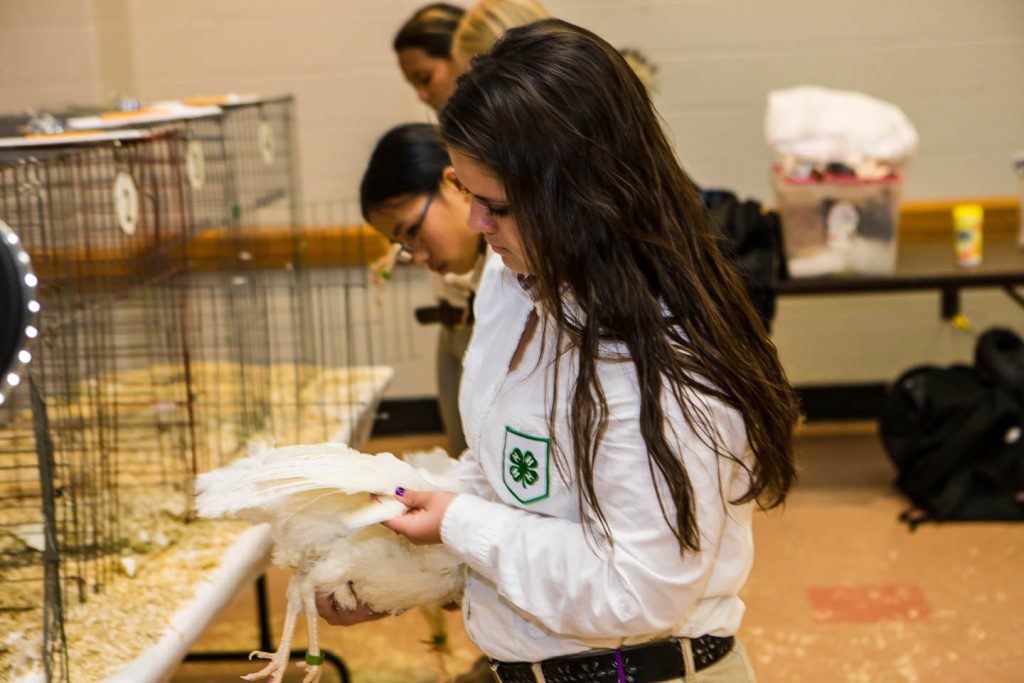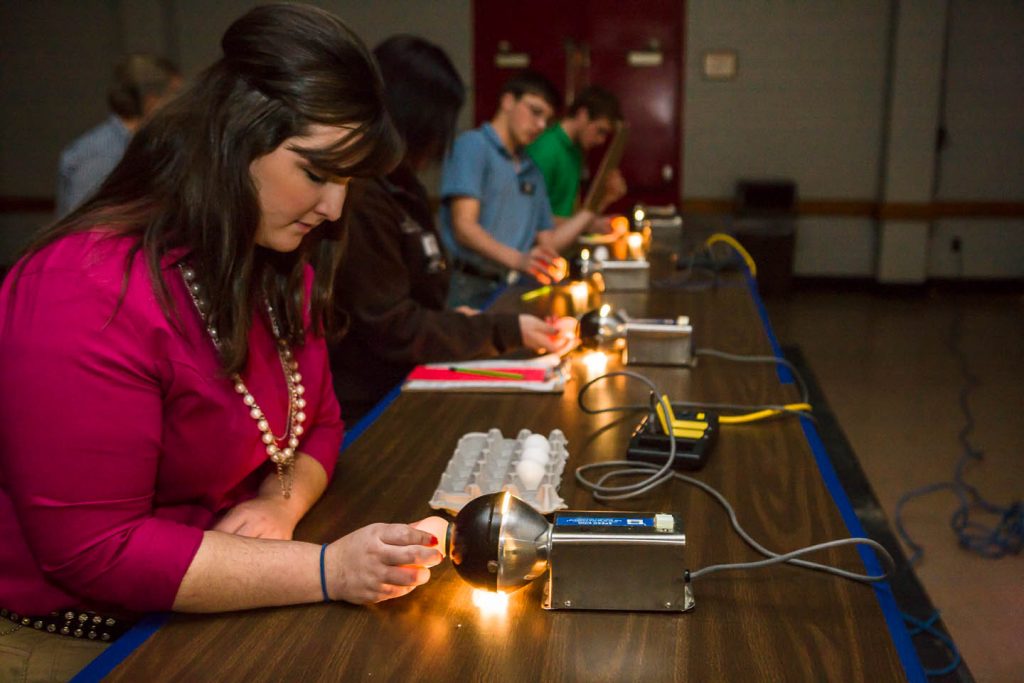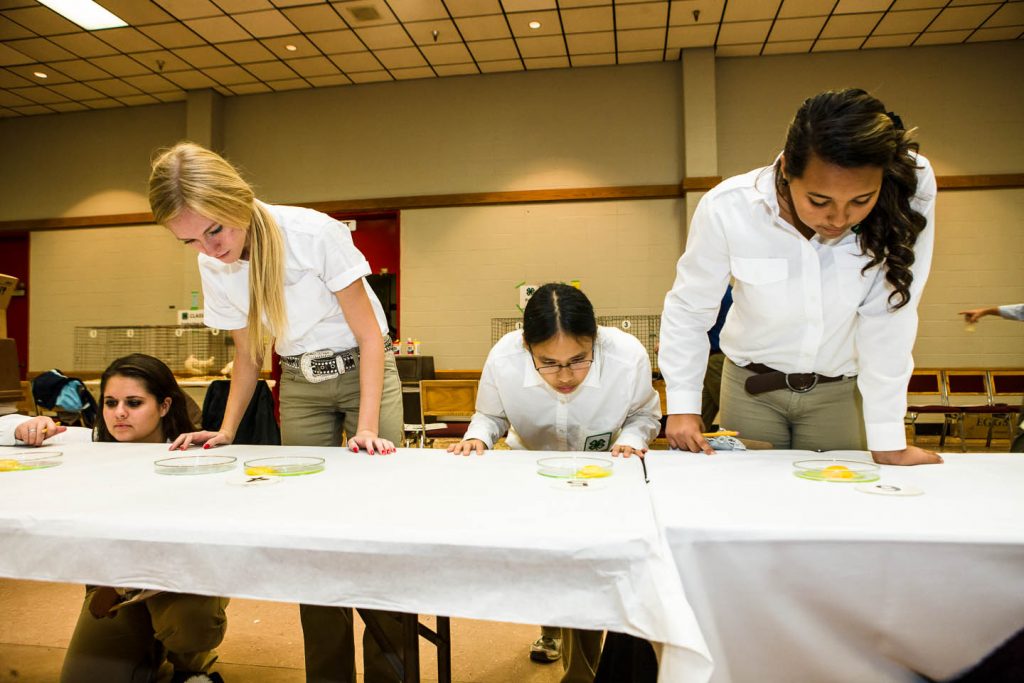written by: dr. jacquie jacob, university of kentucky
poultry judging can be fun, educational, and rewarding. and you can do it! give it a try.
a poultry judging contest is divided into three divisions: egg production, market eggs, and market poultry. here’s how poultry judging works.
production division: at the national contest the 4-hers evaluate three classes of four white leghorn hens each and place them in order from the hen that laid the most eggs to the hen that has laid the least. in the national contest there are three classes of hens, and oral reasons are given on two of them. oral reasons explaining why you placed the class the way you did are given on two of the classes.
the hens are evaluated for the level of pigmentation in the skin, the amount of fat in the abdomen, and their abdominal capacity. all these criteria are used to decide which hen has laid the most eggs in the past and which hen is laying the most eggs right now. this is a useful tool when thinning out an egg-laying flock to remove any hens that haven’t been or aren’t currently laying eggs right now.


market egg division: 4-hers grade table eggs for exterior and interior quality. the interior quality classes include both candling and broken-out eggs. the grading is done according to the standards set by the united states department of agriculture (usda).
all the eggs you buy in the grocery store should have been inspected for any blood or meat spots, graded for interior and exterior quality, and sized. each carton typically includes the usda seal indicating the eggs’ grade (aa or a) and size (medium, large, extra large or jumbo). these standards are set to make sure the customer gets a high-quality egg with minimal damage to the shell while it is being transported from the hen house to your house.
eggs are judged in three different ways – exterior quality, interior quality and broken out eggs. in the national contest there are two classes of exterior quality, two classes of interior quality, and one class of broken out eggs.



market poultry division:judges grade ready-to-cook poultry carcasses and identify the parts of a cut up chicken. in the national contest, they grade two classes of fryers, one class of heavy fowl and one class of turkeys they also identify one class of chicken parts.
carcasses are judged according to the standards set up by the usda. the grades pertain primarily to the sale of whole chickens and turkeys that consumers will either cut up for cooking or roast whole. the standards relate to the presence of exposed meat, and broken and disjointed bones, as well as whether there are missing parts. a grade a chicken or turkey carcass must have minimal skin missing exposing flesh (that is meat). it must have no broken bones. the carcass can only be missing the tail and wing tips, which most people don’t eat anyway.


poultry judging is a great way to meet new friends and gain an important skill. and did i mention it’s rewarding? top performers win awards.


get started today! the national poultry judging manual can be purchased at http://marketplace.unl.edu/ne4h/4h460.html.
have an ordering question? contact:
michael riese
extension marketplace coordinator
university of nebraska – extension
211 ag hall, p.o. box 830703
lincoln, ne 68583-0703
mriese3@unl.edu
phone: (402) 472-9053
fax: (402) 472-5557

